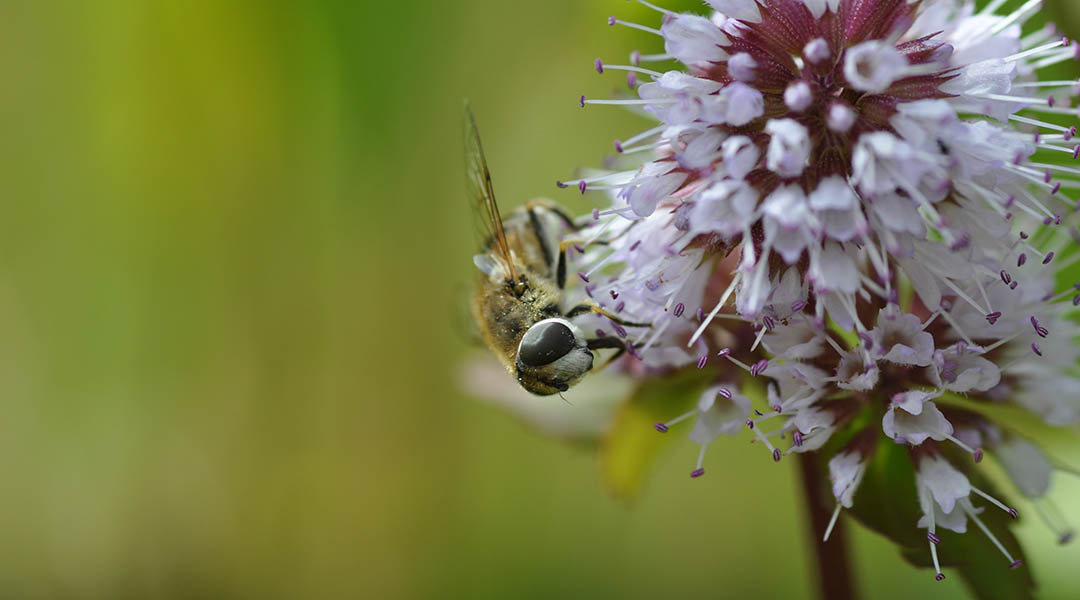To reproduce, many plants depend on the help of pollinators, such as bees, moths, or flies, which carry pollen from one plant to another. This is true not just for wildflowers, but also for three quarters of major food crops.
But likely as a result of climate change, over the past century the number and type of pollinating insect species have drastically changed, especially in the northernmost latitudes of the planet near the Arctic Circle.
Evolution has meant that a close connection exists between each plant and its pollinators, such that there are insects that are specialized in pollinating only certain plants. For their part, plants, too, have evolved to favor the visit of given insects. However, this implies that even minute changes can unbalance this delicate system.
In a new study, researchers of the Martin-Luther University Halle-Wittenberg, the German Centre for integrative Biodiversity Research Halle-Jena-Leipzig, and the Helmholtz Centre for Environmental Research, led by Leana Zoller, used northern Finland as an example and examined how pollinator communities have already begun to drastically change.
A century of data
To do so, they first examined the notebooks of Finnish forester Frans Silén. Between 1895 and 1900, in the vicinity of the village of Kittilä-about 120 kilometers north of the Arctic Circle, he tracked which insects visited which species of plants and how often.
“We used a historic dataset to compare how plants and pollinators interacted 120 years ago and how they interact today,” said Zoller. “It is very rare to compare interactions between plants and pollinators over such long periods of time. Therefore, to date, we know very little about whether and how the intricate networks of these interactions have changed over long periods of time.”
The team went in search of places where Silén had already observed pollinators and collected new data as comparative values for 17 plant species that were included in his initial survey. Not much has changed in the area since Silén roamed the Finnish countryside — it is still sparsely populated and the landscape similar to what it used to be.
The thing that has changed the most is the climate. “Insect pollinators are facing an increasingly difficult time in today’s world,” explained Zoller. “This is due to various man-made environmental changes, such as the effects of climate change, increasing intensification of land use, or habitat fragmentation.”
Drastic decline
The team noted that only 7% of the plant visits observed by Silén in the past involved the same insect and plant species, meaning that the vital plant-insect relationships have drastically changed in the region, and specialist pollinators have decreased disproportionately.
“This might have negative implications for the pollination service to plants, as specialist pollinators are considered to be more effective than generalists,” said Zoller. This is true, for example, of hoverflies and moths, whose numbers have drastically declined.
In contrast, bumblebees and flies, many of which are less specialized pollinators and may therefore be less efficient, are still present. This means that native plants which depend on specialized insects, are less likely to reproduce.
Although there is currently no data on a possible collapse in the reproductive capacity of plants in this area, it is clear that things are changing fast. In the near future, the Finnish climate may prove to be unsuitable even for flies, which now assume the role that moths and hoverflies originally played.
This could also become a problem in other parts of the world. “High latitude regions are particularly affected by climate change, hence studying the pollination systems in these regions can give us an idea of what might be expected in other regions of the world with progressing climate change,” explained Zoller.
The importance of studies such as this, in addition to giving us a clear idea of how plant-pollinator interactions have changed over time, are also a way to “generate greater awareness and thus more effective conservation measures for a variety of pollinators such as hoverflies, flies, and moths,” concluded Zoller.
Reference: Leana Zoller, Joanne Bennett, and Tiffany M. Knight, Plant–pollinator network change across a century in the subarctic, Nature Ecology and Evolution (2023). DOI: 10.1038/s41559-022-01928-3
Feature image credit: © Leana Zoller

















